Manmohan Singh: A political life in pictures
Prime Minister Manmohan Singh was born in a village in the then undivided province of Punjab on September 26, 1932. He turns 79 today.
-
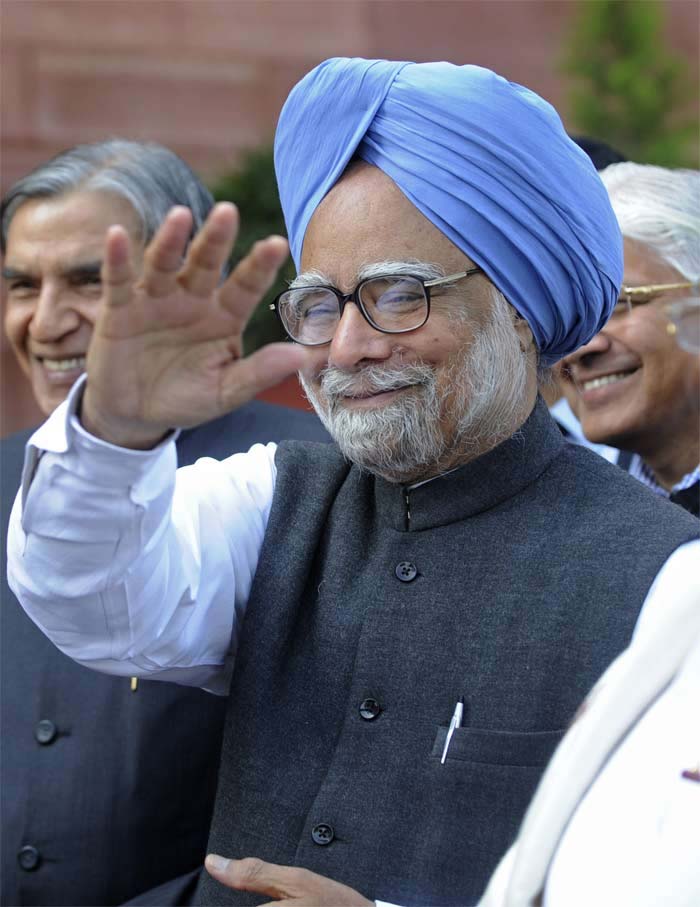 Prime Minister Manmohan Singh was born in a village in the then undivided province of Punjab on September 26, 1932. He turns 79 today.
Prime Minister Manmohan Singh was born in a village in the then undivided province of Punjab on September 26, 1932. He turns 79 today. -
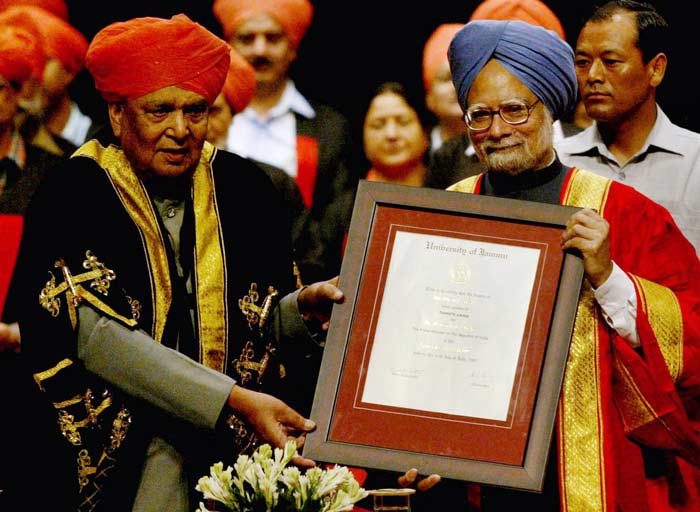 Dr Singh graduated from Punjab University in 1948 and has earned economic degrees from Cambridge and Oxford. He has also received many honorary degrees. Dr Singh is not only the country's first Sikh Prime Minister but also the first Prime Minister to hold a doctorate.
Dr Singh graduated from Punjab University in 1948 and has earned economic degrees from Cambridge and Oxford. He has also received many honorary degrees. Dr Singh is not only the country's first Sikh Prime Minister but also the first Prime Minister to hold a doctorate. -
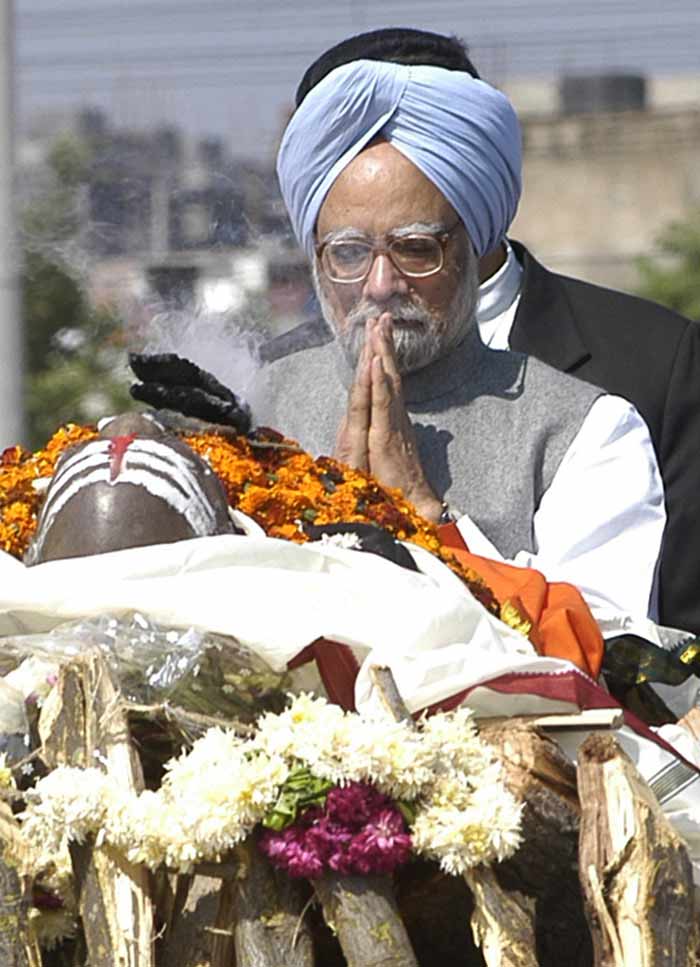 He is credited for economic reforms which transformed India. Under the late Prime Minister Narasimha Rao, Dr Singh was made Finance Minister in 1991. His economic reforms ensured India was well set on the road to becoming an economic superpower.
He is credited for economic reforms which transformed India. Under the late Prime Minister Narasimha Rao, Dr Singh was made Finance Minister in 1991. His economic reforms ensured India was well set on the road to becoming an economic superpower. -
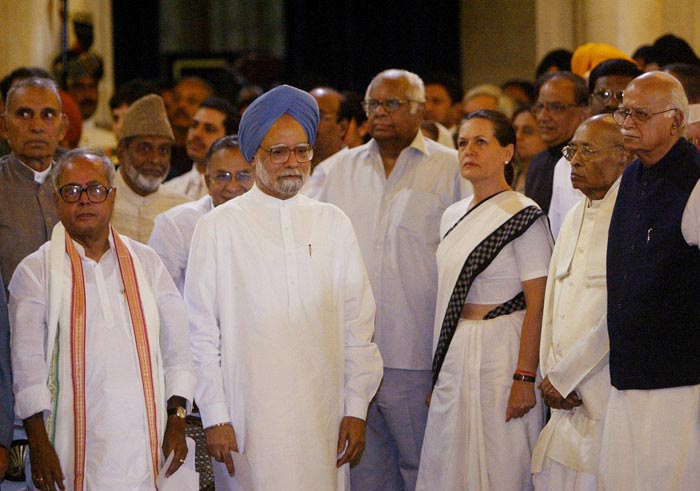 He was appointed Prime Minister in the 2004 elections, as Congress President Sonia Gandhi withdrew herself from the race.
He was appointed Prime Minister in the 2004 elections, as Congress President Sonia Gandhi withdrew herself from the race. -
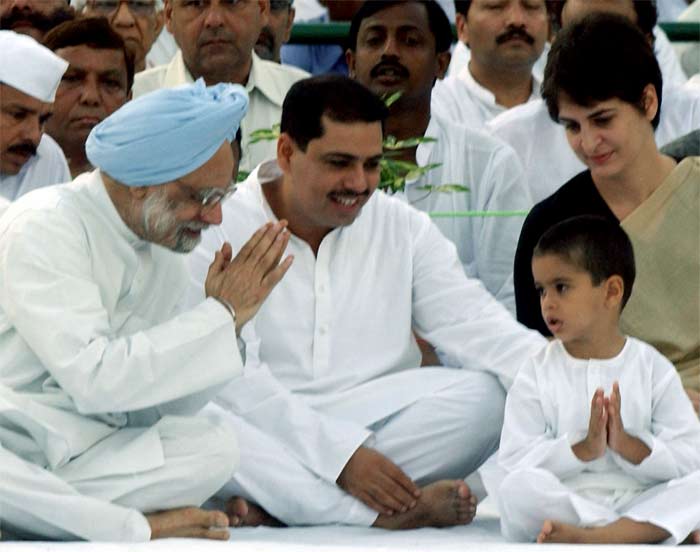 Commentators cited Dr Singh's non-political nature and his closeness to the Gandhi family, as some of the reasons for his winning the top post.
Commentators cited Dr Singh's non-political nature and his closeness to the Gandhi family, as some of the reasons for his winning the top post. -
.jpg) As Prime Minister, Dr Singh's first priority was to strengthen ties with the US. His meetings and his personal rapport with former US President George Bush resulted in the landmark Indo-US nuclear deal in July 2005. The deal was called the 123 Agreement.
As Prime Minister, Dr Singh's first priority was to strengthen ties with the US. His meetings and his personal rapport with former US President George Bush resulted in the landmark Indo-US nuclear deal in July 2005. The deal was called the 123 Agreement. -
.jpg) Dr Singh argued the deal would meet India's growing energy demands. However, he and the Congress faced tough opposition, especially from the Left parties, who saw the deal as impinging on India's sovereignty. A vote-of-confidence resulted but the government emerged triumphant.
Dr Singh argued the deal would meet India's growing energy demands. However, he and the Congress faced tough opposition, especially from the Left parties, who saw the deal as impinging on India's sovereignty. A vote-of-confidence resulted but the government emerged triumphant. -
.jpg) Dr Singh met with Pakistan President Pervez Musharraf when Musharraf visited India in April 2005. Though the meeting lacked the expectations of the Vajpayee-Musharraf meet in Agra 2001, the two leaders agreed to add consulates in Mumbai and Karachi and establish a rail link from Kokhrapur in Rajasthan and Munnabao in Pakistan's Sindh province.
Dr Singh met with Pakistan President Pervez Musharraf when Musharraf visited India in April 2005. Though the meeting lacked the expectations of the Vajpayee-Musharraf meet in Agra 2001, the two leaders agreed to add consulates in Mumbai and Karachi and establish a rail link from Kokhrapur in Rajasthan and Munnabao in Pakistan's Sindh province. -
.jpg) Along with Congress party president Sonia Gandhi, the Prime Minister flagged off the first bus on April 7, 2005 which connected families on both sides of the divided state of Jammu and Kashmir. This bus went from Srinagar to Muzaffarabad in Pakistan Occupied Kashmir. This was the first time in over 50 years that the two parts of the divided state had been connected directly.
Along with Congress party president Sonia Gandhi, the Prime Minister flagged off the first bus on April 7, 2005 which connected families on both sides of the divided state of Jammu and Kashmir. This bus went from Srinagar to Muzaffarabad in Pakistan Occupied Kashmir. This was the first time in over 50 years that the two parts of the divided state had been connected directly. -
.jpg) Dr Singh also had a historic meeting with his Chinese counterpart Wen Jiabao in New Delhi in 2005. This resulted in a joint statement where India recognised the Tibetan Autonomous Region (TAR) as part of China, while China recognised Sikkim as part of India.
Dr Singh also had a historic meeting with his Chinese counterpart Wen Jiabao in New Delhi in 2005. This resulted in a joint statement where India recognised the Tibetan Autonomous Region (TAR) as part of China, while China recognised Sikkim as part of India. -
.jpg) This goodwill generated from the meeting resulted in the opening of the Nathula Pass - an area which linked Sikkim and the Chinese area Tibetan Autonomous Region (TAR) for trade. This pass had been closed for over four decades.
This goodwill generated from the meeting resulted in the opening of the Nathula Pass - an area which linked Sikkim and the Chinese area Tibetan Autonomous Region (TAR) for trade. This pass had been closed for over four decades. -
 Dr Singh began his second term as Prime Minister in May 2009, as the UPA alliance returned to power in the national elections.
Dr Singh began his second term as Prime Minister in May 2009, as the UPA alliance returned to power in the national elections. -
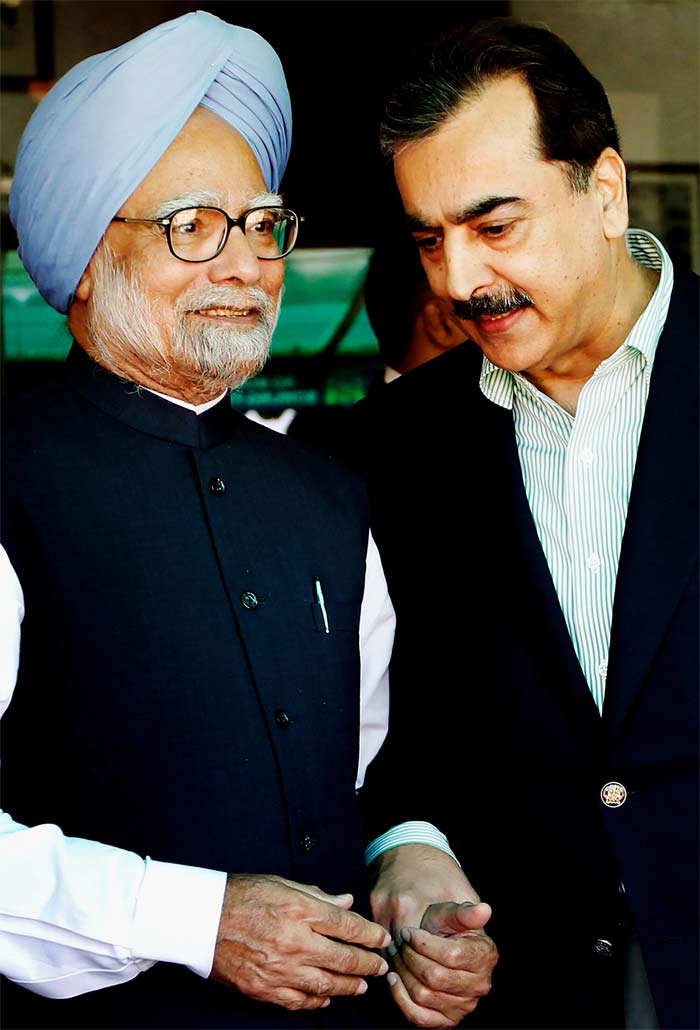 The Prime Minister met Pakistani Prime Minister Yousef Raza Gilani for talks in July, 2009 at Sharm-el-Sheikh, Egypt. However criticism burst forth that Dr Singh had yielded too much ground to Pakistan.
The Prime Minister met Pakistani Prime Minister Yousef Raza Gilani for talks in July, 2009 at Sharm-el-Sheikh, Egypt. However criticism burst forth that Dr Singh had yielded too much ground to Pakistan. -
.jpg) A US visit in November 2009 saw Dr Singh meet with President Barack Obama. But despite the smiles and handshakes, Obama's stance on outsourcing, and his talk of taxing US companies who took business abroad, ensured Dr Singh did not enjoy the rapport he shared with President Bush.
A US visit in November 2009 saw Dr Singh meet with President Barack Obama. But despite the smiles and handshakes, Obama's stance on outsourcing, and his talk of taxing US companies who took business abroad, ensured Dr Singh did not enjoy the rapport he shared with President Bush. -
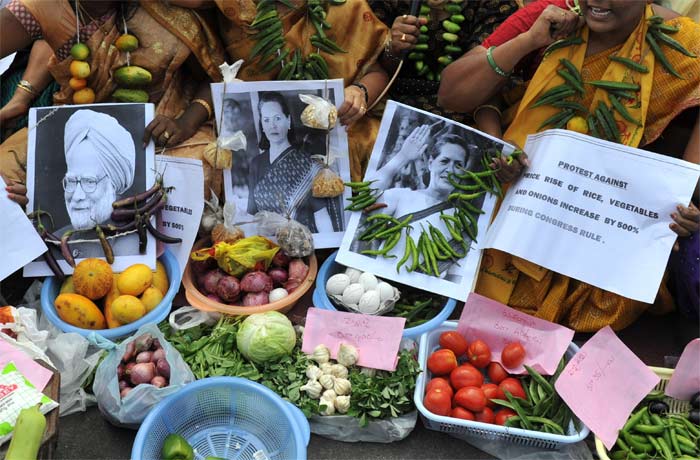 At home, high inflation has been a bone of contention for the UPA. The Prime Minister's economic background has ensured that he and Congress President Sonia Gandhi have had to face the brunt of the people's anger.
At home, high inflation has been a bone of contention for the UPA. The Prime Minister's economic background has ensured that he and Congress President Sonia Gandhi have had to face the brunt of the people's anger. -
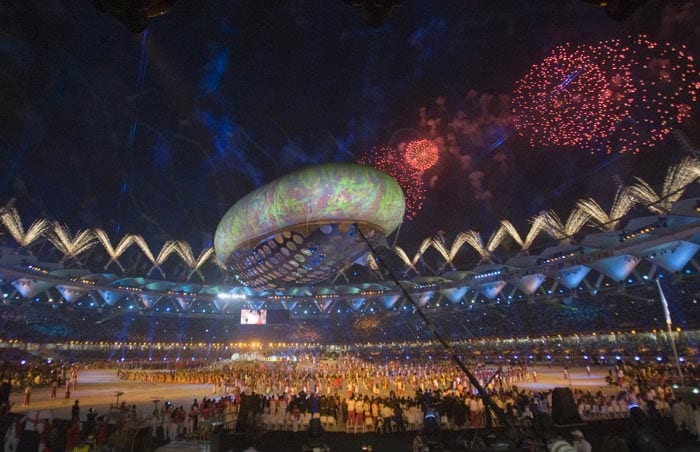 Post 2009, the Congress party has been engulfed in a series of controversies – from the Commonwealth Games to the 2G scam. The resulting fallout led some commentators to question Dr Singh's leadership. Some of them even labelled him a ‘'lame duck'' Prime Minister.
Post 2009, the Congress party has been engulfed in a series of controversies – from the Commonwealth Games to the 2G scam. The resulting fallout led some commentators to question Dr Singh's leadership. Some of them even labelled him a ‘'lame duck'' Prime Minister. -
 To counter the charges, Dr Singh held a media interaction at his office where he fielded questions about whether he was ''remote controlled'' by Sonia Gandhi and when, if ever, Rahul Gandhi would take his place. Responding to allegations surrounding his credibility, Dr Singh said he was even ready to place his office under the purview of the Lokpal.
To counter the charges, Dr Singh held a media interaction at his office where he fielded questions about whether he was ''remote controlled'' by Sonia Gandhi and when, if ever, Rahul Gandhi would take his place. Responding to allegations surrounding his credibility, Dr Singh said he was even ready to place his office under the purview of the Lokpal. -
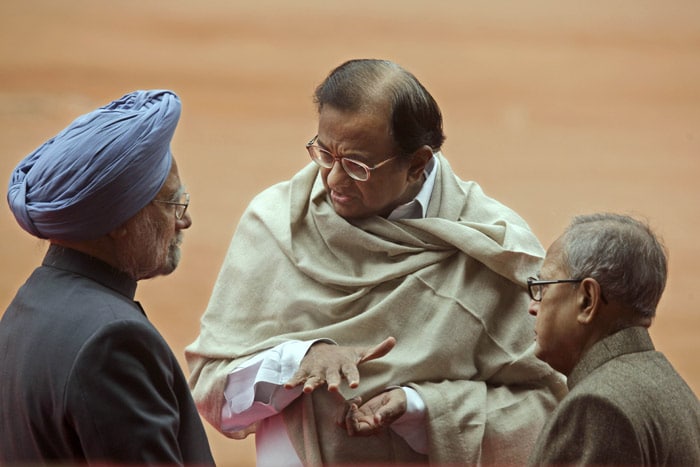 But his own credibility notwithstanding, Dr Singh will now have plenty to do to restore harmony in his cabinet. A note from the finance ministry suggesting Home Minister P Chidambaram could have taken stricter action on the 2G scam, when he was Finance Minister, has led to a crisis of sorts within the UPA.
But his own credibility notwithstanding, Dr Singh will now have plenty to do to restore harmony in his cabinet. A note from the finance ministry suggesting Home Minister P Chidambaram could have taken stricter action on the 2G scam, when he was Finance Minister, has led to a crisis of sorts within the UPA. -
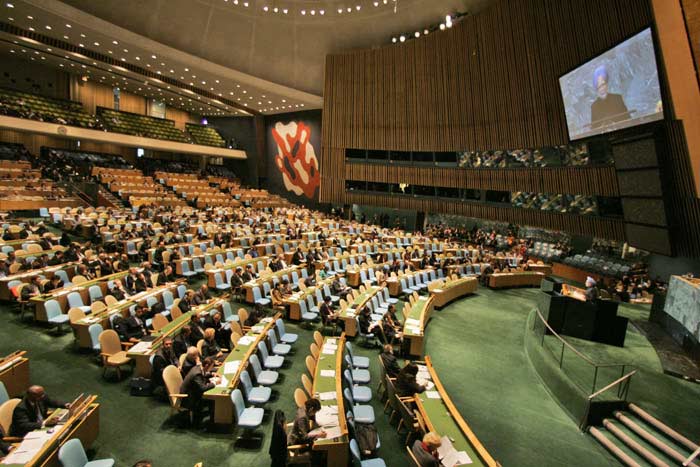 Political concerns aside, Dr Singh made India proud when he addressed the United Nations General Assembly on Saturday. Emphasising support for Palestinian statehood; need for reform of the United Nations Security Council; and his prescription for an ailing world economy; Dr Singh showed that when India talks, the world listens.
Political concerns aside, Dr Singh made India proud when he addressed the United Nations General Assembly on Saturday. Emphasising support for Palestinian statehood; need for reform of the United Nations Security Council; and his prescription for an ailing world economy; Dr Singh showed that when India talks, the world listens.
Advertisement
Advertisement
Advertisement
Advertisement
